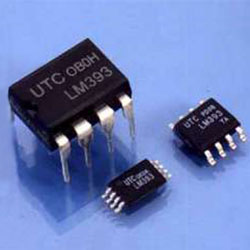
Over the past year (at original printing), without warning, Analog Devices has discontinued three major SSM parts—all popular in the pro audio world, all outstanding achievers—the SSM 2017 Mic Preamp, SSM2110 RMS Converter, SSM2120 Dynamic Range Processor.
The reason given is these are old parts done on smaller wafers that are not practical to manufacturer any longer. Based on this reasoning and these recent terminations, it is believed the entire SSM line will soon follow. Caveat emptor.
Texas Instruments (TI) offers some interesting candidates in the single-supply RRIO arena.
Of particular use are the singles, duals and quads in each series. If you only have 3 volts, or less, take a look at the TLV2361/2362 series, TLV2460 series, and the TLV2780 series. If you have at least 5 volts, then check out the TLC070 series, TLC2201/2202 series, and the TLC2272/2274. Full data available at TI’s website.
National Semiconductor’s choice for single-supply RRIO audio grade is the LM6141/6144 family, operating from ±1.8 VDC, but their noise spec of 16 nV per square-root-Hz (1 kHz spot) restricts usage to low gain applications (unity gain filters, for instance).
If you have at least ±5 VDC, then you can use National’s very fine LM833/837 series of audio op amps—long an audio staple. See data sheets on their website.
With at least ±2.25 VDC available, consider Maxim’s MAX4493/4494/4495 family of single, dual & quad op amps, featuring typical specifications of 3 MHz gain-bandwidth product, 3 V/microsecond slew rate, a noise spec of 8 nV per square-root-Hz (typ) from 100 Hz to 20 kHz, with a 1/f corner at 50 Hz, and a typical THD+N performance of less than 0.002% at 1 kHz.
Selecting the best op amp for your application involves many other parameters than those outlined above. There is always cost—some of these parts are pricey. Configuration is important—many of these are singles.
Nowadays, with the proliferation of SMT (surface-mount technology) size has become an issue—is it available in the package type your design and manufacturing constraints require? (The opposite side of that coin is can you get it leaded, or is it only available in SMT?)
Can you get the part you want, with the configuration you require, in the package you need, at the price you can afford? That is the difficulty … oh, and then there is availability and second-sourcing.
